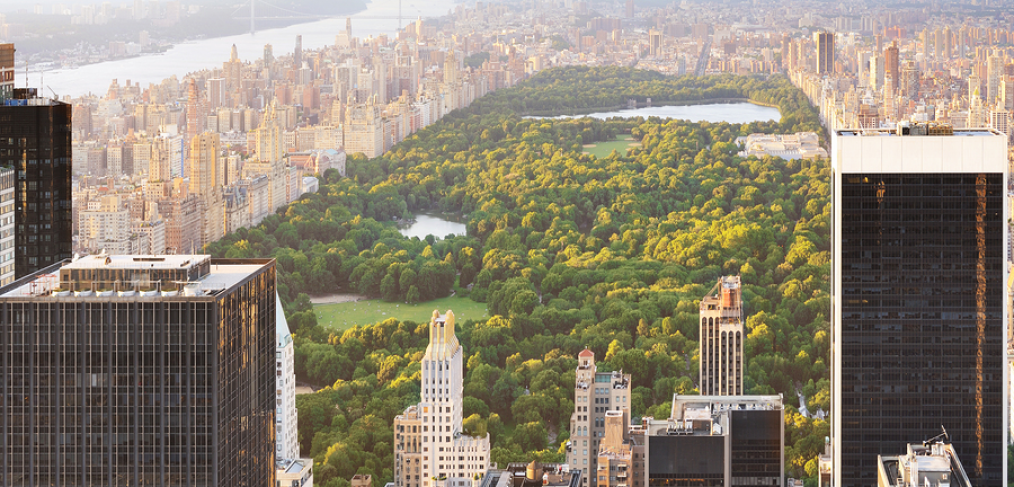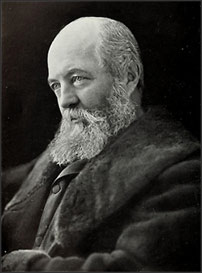
Frederick Law Olmsted: Father of Modern Landscape Architecture

Have you ever been to Central Park in New York City? Golden Gate Park in San Francisco? America’s Capitol grounds? Detroit’s Belle Isle? The Biltmore Estate in Asheville, NC?
If you’ve been to any of these places, you’ve seen landscape architecture at its finest. All of these places were planned by Frederick Law Olmsted, the man who arguably fathered landscape architecture in this country. It is likely many of the most memorable green spaces you’ve been to were planned by him, one of his sons, or one of the many landscape architects influenced by him.
What is Landscape Architecture?
We all do landscape architecture in our own small ways. Or we dream of doing it: how we would create our own green spaces if we had all the time and money in the world.
Landscape architecture is simply the design of outdoor spaces. A landscape architect has many impacting factors in mind as he or she plans:
- Environmental
- Social-behavioral
- Aesthetic
- Ecological (investigating soil conditions and processes in the landscape and designing interventions that will produce a desired outcome)
- Site planning
- Storm water management
- Visual resource management
- Green infrastructure planning and provision
In other words, a landscape architect uses green outdoor spaces as his raw material. He or she tries to bring them into harmony with the buildings that surround them, or vice versa.
Landscape architecture is actually a very dynamic and exciting career – it’s more than just planting shrubs or overseeing the construction of a play structure. Landscape architects have to draw on many types of skills and areas of expertise: environmental science, art, ecology and more.
In addition, landscape architecture can be impactful for more than just aesthetic reasons. It can restore an endangered wetland area, secure a government building, remove toxins from rainwater, and much more. Today’s landscape architects are expanding upon the vision of Olmsted and those like him.
A Brief History of Frederick Law Olmsted’s Life and Work

Frederick Law Olmsted
It’s impossible to tell all of the things Frederick Law Olmsted did for the formation of parks and college campuses across the country, as well as his personal achievements, so we will hit the high points. The best thing you can do with this information is find out more about this great man yourself and perhaps go visit some of his most beautiful designs around the country.
Olmsted was born in Hartford, Connecticut in 1822. Because of sumac poisoning, he gave up his college plans for Yale and worked as an apprentice seaman, merchant and journalist. He bought a 125-acre farm on Staten Island, NY in 1848.
In 1858, Olmsted entered a competition to plan New York City’s Central Park along with English landscape architect Calvert Vaux and won. Olmsted had been relatively inexperienced up to this point, but Vaux had chosen him as a partner because of a mutual friend who’d died in a famous steamboat explosion and because he admired Olmsted’s ideas.
One of these remains in Central Park as an important legacy which we take for granted, which is that he believed common green spaces should belong to everyone equally regardless of their social status. That idea is reflected in the design of Central Park and eventually came to define how all public green spaces are thought of in this country and in much of the rest of the world now.
Significant Work as a Journalist
Two other parts of Olmsted’s life are particularly interesting. One of them is his significant work as a journalist, in which he traveled through the American South and Texas to observe the slave trade for the New York Daily Times (now the New York Times).
Olmsted’s reporting on the slave trade is collected in three books A Journey in the Seaboard Slave States (1856), A Journey Through Texas (1857), A Journey in the Back Country in the Winter of 1853-4. His observations, first hand, of the South of our country’s reliance on slave labor, and how it compared to the free North economy would be a fascinating read for any budding historian. He also published Walks and Talks of an American Farmer in England in 1852 after touring England’s public parks.
The Conservationist
The other interesting part of Olmsted’s life is his work as a conservationist. He was an early leader of the conservation movement in this country, which eventually included Theodore Roosevelt and John Muir – who inspired Roosevelt to create the National Parks.
Olmsted was more personally responsible for the Yosemite Valley and Mariposa Big Tree Grove being designated as public reserves. This was the first land set aside by Congress for public use. Many more pieces of beautiful land were added to this and preserved for future generations. He was an active participant in conserving the natural wonders of Niagara Falls – which was being threatened by industrial development – and the Adirondack Region of New York. He became known for refusing park projects in order to preserve natural spaces from being “marred by the intrusion of artificial objects.”
How You Can See Olmsted’s Work
If you, like me, are interested in Olmsted as a historical figure, you can visit Olmsted’s Boston office, where he, his sons and successors worked for nearly a century. There are a number of parks designed by Olmsted in New York City other than Central Park:
- Morningside Park
- Riverside Drive and Park in Manhattan
- Eastern Parkway
- Fort Greene Park
- Grand Army Plaza
- Ocean Parkway and Prospect Park in Brooklyn
- Forest Park in Queens
- The Vanderbilt Mausoleum and Moravian Cemetery on Staten Island
Niagara Falls State Park is another of Olmsted’s most famous works, as is the Biltmore Estate in Asheville North Carolina. Jackson Park on Chicago’s South Side was developed for the 1898 Columbian Exhibition or Chicago World’s Fair, of which the Museum of Science and Industry remains as one of the buildings built for that purpose.
Detroit’s Belle Isle Park was developed by Olmsted and remains one of the most beautiful spots to visit there, as is Milwaukee’s Riverside Park. The Emerald Necklace series of parks in Boston was developed, along with many, many other sites in Olmsted’s home city, by the architect.
For more resources on Olmsted’s projects check out:
- The National Association for Olmsted Parks
- The Cultural Landscape Foundation
- The Olmsted Parks Conservancy

